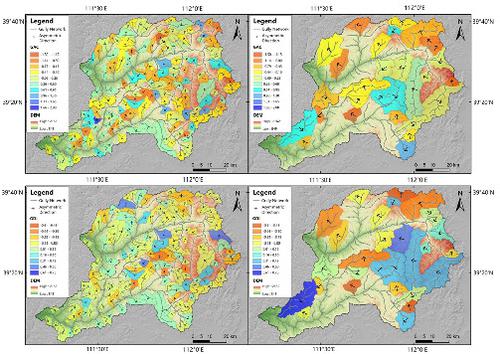当前位置:
X-MOL 学术
›
Earth Surf.Process. Land.
›
论文详情
Our official English website, www.x-mol.net, welcomes your
feedback! (Note: you will need to create a separate account there.)
Formation of asymmetrical loess gullies in the northeastern loess plateau of China
Earth Surface Processes and Landforms ( IF 2.8 ) Pub Date : 2020-12-29 , DOI: 10.1002/esp.5062 Si‐Ming Chen 1, 2, 3 , Li‐Yang Xiong 1, 2, 3 , Jia‐Zhen Duan 2, 4 , Guo‐An Tang 1, 2, 3
Earth Surface Processes and Landforms ( IF 2.8 ) Pub Date : 2020-12-29 , DOI: 10.1002/esp.5062 Si‐Ming Chen 1, 2, 3 , Li‐Yang Xiong 1, 2, 3 , Jia‐Zhen Duan 2, 4 , Guo‐An Tang 1, 2, 3
Affiliation

|
Loess gullies are the most active and changeable landform unit on the Loess Plateau of China. Under the influence of inhomogeneous internal and external forces, various gully morphologies have been identified as specific forms of asymmetrical loess gullies in the northeastern Loess Plateau. Thus, the formation mechanisms of asymmetrical gullies should be examined to better understand the gully evolution processes in this area. In this study, a typical asymmetrical gully area and its geological background in the northeastern Loess Plateau are investigated. Then, the asymmetrical gullies are extracted and ordered under different watershed hierarchies using 5 m horizontal resolution digital elevation models. The asymmetrical gullies are characterized using the gully deviation index and gully asymmetrical coefficient to quantitatively and qualitatively describe the gully formation from the perspective of gully morphology. Subsequently, environmental factors, such as the bedrock, climate, vegetation and interactions with neighbouring watersheds, are combined to achieve an in‐depth understanding of the mechanisms of asymmetrical gully formation. The results show that most watersheds shift to the right side of the watershed geometric centre line, thereby forming a specific asymmetrical gully morphology. The phenomenon in which the asymmetrical degree characteristics decrease with the increase in drainage area suggests evident morphological differences on both sides of the main channel on a small scale, and relatively weak morphological differences on both sides of the main channel on a large scale. The degree of loess gully asymmetry appears higher in the area where only the windward slope is covered by loess than in areas where all slopes are covered by loess. The interaction between adjacent watersheds also influences the formation of asymmetrical gullies. These results support the understanding of asymmetrical gully formation in relation to the underlying bedrock structure and gully reorganization, thereby contributing to the development of process‐based gully evolution models.
更新日期:2020-12-29











































 京公网安备 11010802027423号
京公网安备 11010802027423号